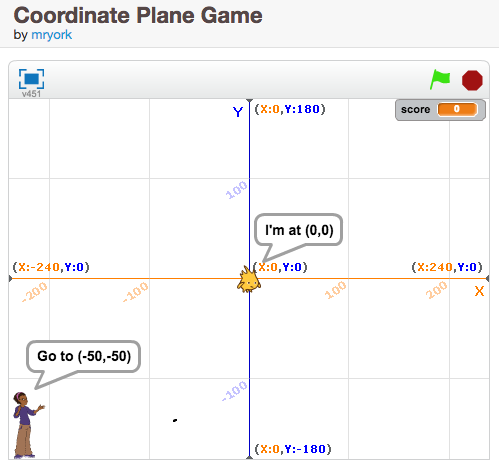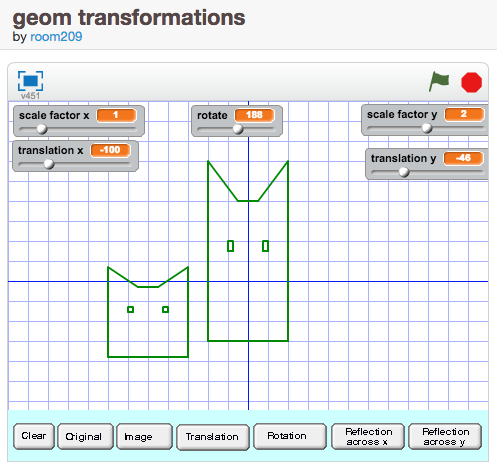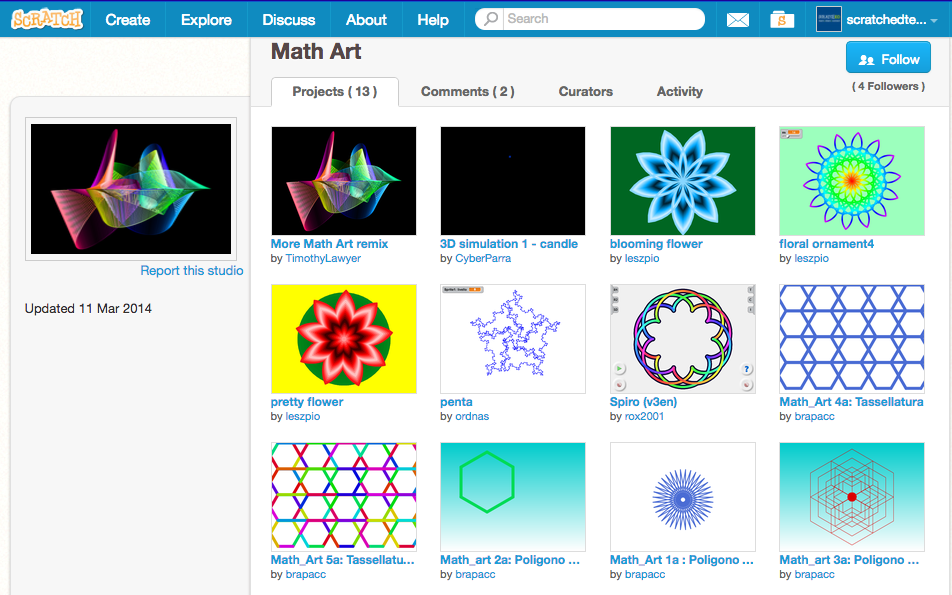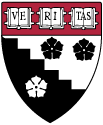Scratch Across Every Subject: Math
For many students, engaging with math and understanding its real world applications can be a challenge. They might get bored with the idea of learning formulas or intimidated by abstract problems and complicated rules. That’s where Scratch can step in.
From the very beginning, students using Scratch are exploring mathematical concepts, starting with the cartesian coordinates they have to understand in order to move sprites around the screen. To make that idea more explicit, students can draw coordinate planes in Scratch, or remix one of many related projects to add their own twist (for example, this game involving cartesian coordinates is a nice way to practice and has yielded several remixes). This resource from Ben Johnson helps students determine coordinates needed to draw their names in Scratch, which can be done using the pen feature. Scratchers have also created some useful projects introducing others to the coordinate plane - here’s one example.

Students can deepen their understanding of the coordinate system by remixing games like this.
As a key part of the coordinate plane, negative numbers quickly come into play during initial explorations of Scratch. Angles/degrees are added to the mix as students look for ways to fine-tune their sprites' motion, and can form the basis for creative games such as these two examples. And those topics, while providing plenty of room for learning, are just the beginning of the concepts that can be brought to life using Scratch.
Learning about math with Scratch doesn’t have to be limited to math-focused projects. Short problems can easily be worked into games, where solving problems might let a player advance in the game or collect more currency. Nearly any type of project allows students to practice fundamentals like cartesian coordinates, so students can pursue projects based around personal interests while getting comfortable with these concepts.
Álvaro Molina Ayuso, a secondary school math teacher in Spain, has students create Scratch projects showing practical applications of the ideas covered in each unit. For example, his students learning about percentages used Scratch to portray a scenario, such as an online shop, which requires the calculation of a product discount.
Another way to visualize how percentages work, especially for those who are completely new to the topic, is by using the “scale” command with various percentages and noting how the size of the sprite shifts accordingly. Visualizing changes to a shape or object by changing a sprite can also help students learning about transformations, who can program sprites to perform translations, rotations, and reflections. Karen Randall shares several suggestions for projects related to transformations, geometry, probability, and other topics in this resource. She also outlines sample geometry projects here.

By creating a project like this one, by Karen Randall, students can explore fundamental geometry concepts.
For U.S. teachers hoping to integrate Scratch into classrooms guided by Common Core standards, Kelly Vaughan provides a series of three math lessons for middle school students. In these lessons, sixth graders draw polygons in the coordinate plane, seventh graders look into scale drawings of geometric figures, and eighth graders create function machine programs.
Several teachers have found that Scratch can be a nice platform to bring students together across grade boundaries. Older students may enjoy mentoring their younger counterparts in the use of Scratch, and they can also create games that allow younger students to have fun while practicing grade-appropriate problem solving. For example, games similar to this one shared by Ben Johnson could be programmed by one grade for the grade below them.
Beyond introducing operations and concepts, Scratch can help students see the beauty in math. Many Scratchers have produced creative projects showcasing colorful patterns, fractals and more. This studio has several good examples, as does this studio of work by 10th graders taught by Maria Beatrice Rapaccini.

Showing students example projects, such as this studio of work by 10th grade students in Maria Beatrice Rapaccini's class, can spark curiosity and inspire them to take on complex challenges.
Still looking for ideas?
- Check out this presentation by Mark Tranter, including a range of algorithms that can be portrayed using Scratch, or this set of videos shared by Seb Schmoller of Citizen Maths. The National Council of Teachers of Mathematics published an article that features numerous applications of Scratch tailored specifically for math educators.
- There are many additional resources available on ScratchEd to help you integrate math into the classroom, searchable here, and you can also pose questions to other teachers on the discussion forums. If you have a specific topic in mind that you hope to guide students in exploring through Scratch, searching Scratch for related keywords, such as "fractions" may yield useful project examples.
- Browse sample math projects – including sine, cosine, and tangent waves as well as a math dragon – in this collection of Scratch projects across the curriculum.
- For more tips on integrating Scratch into the math curriculum, check out the resources in the Scratch Cross-Curricular Integration Guide.
And please share resources you find or create with the online community!


Turtles speak mathematics
https://github.com/humitos/turtles-speak-mathematics-es
Turtle confusion
https://github.com/humitos/turtle-confusion-es